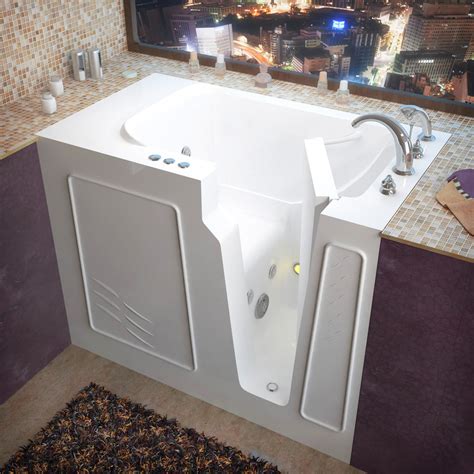Understanding the Drainage System of a Walk-In Tub
The drainage system of a walk-in tub is a crucial component that determines how quickly water can be drained from the tub. To ensure a safe and efficient experience, it is essential to have a clear understanding of the drainage system and how it functions.Walk-in tubs are specifically designed with features to accommodate individuals with mobility issues or disabilities. As a result, they typically have built-in mechanisms that allow for faster and more efficient drainage compared to traditional bathtubs. These mechanisms include powerful drain pumps and strategically placed drainage outlets.
The Role of Drain Pumps in Speeding up Drainage
One of the key elements that contribute to the faster draining capabilities of walk-in tubs is the presence of drain pumps. These pumps are designed to quickly remove water from the tub, significantly reducing the time spent waiting for the tub to empty.The drain pump is usually connected to the drainage outlet of the tub and operates using electricity. When activated, the pump creates a strong suction force that facilitates the rapid expulsion of water. This mechanism allows for a faster draining experience, ensuring that users do not have to wait for an extended period inside the tub after bathing.

Factors Affecting the Speed of Drainage
While walk-in tubs are designed to drain water quickly, there are several factors that can influence the speed of drainage. Understanding these factors can help individuals optimize their tub's drainage system to ensure the fastest and most efficient experience.1. Tub Size: The size of the tub plays a significant role in determining how quickly it can drain. Larger tubs generally require more time to drain due to the larger volume of water they can hold compared to smaller models.2. Water Pressure: The water pressure in your home can impact the speed of drainage. Higher water pressure tends to result in faster drainage, while low water pressure can cause delays.3. Drainpipe Size and Length: The size and length of the drainpipe connected to the tub can affect drainage speed. Larger and shorter drainpipes generally facilitate faster drainage.4. Obstructions and Clogs: Any obstructions or clogs within the drainpipe can impede water flow and slow down drainage. Regular maintenance and cleaning of the drainpipe can help prevent such issues.
Tips for Optimizing Drainage Speed
To ensure the fastest drainage possible in a walk-in tub, consider implementing the following tips:1. Regular Maintenance: Clean the drainpipe and check for any obstructions on a regular basis. This will prevent clogs and ensure smooth water flow.2. Optimal Water Pressure: If your home has low water pressure, consider installing a pressure booster or contacting a plumber to optimize water pressure for faster drainage.3. Position the Tub: Properly positioning the tub during installation can help with drainage. Ensure that the tub is leveled correctly, allowing water to fully reach the drainage outlet.4. Choose the Right Tub Size: If speedy drainage is a priority, consider selecting a smaller tub size. This will minimize the amount of water that needs to be drained, reducing the overall time required.5. Seek Professional Help: If you experience slow drainage even after taking these optimization steps, it is advisable to consult a professional plumber or the manufacturer of your walk-in tub for further assistance.In conclusion, walk-in tubs are equipped with specialized drainage systems, including drain pumps, to facilitate quick and efficient water removal. Various factors, such as tub size, water pressure, and drainpipe characteristics, can affect the speed of drainage. By understanding these factors and implementing proper maintenance and optimization techniques, users can ensure the fastest possible drainage from their walk-in tubs.
No comments:
Post a Comment